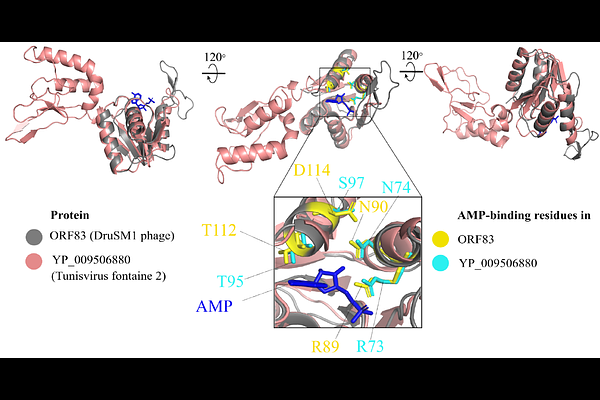Elucidating the mechanisms of action and evolutionary history of phage anti-defence proteins

Elucidating the mechanisms of action and evolutionary history of phage anti-defence proteins
Murtazalieva, K.; Karatzas, E.; Corona, F.; Wang, J.; Typas, A.; Finn, R. D.
AbstractPhages and bacteria are locked in a molecular arms race, with phage anti-defence proteins (ADPs) enabling them to evade bacterial immune systems. To streamline access to information on ADPs, we developed the Encyclopaedia of Viral Anti-DefencE Systems (EVADES), an online resource containing sequences, structures, protein family annotations, and mechanisms of action (MoA) for 257 ADPs. Through computational structural analysis we established putative MoAs for 21 uncharacterised ADPs. We demonstrate the utility of EVADES by exploring three hypotheses and demonstrate that: (i) ADPs acting as DNA mimics exhibit broad-spectrum activity against defences; (ii) protein sharing across defence systems enables multi-defence inhibitory activity of ADPs; and (iii) eukaryotic dsDNA viruses encode ADP homologs, suggesting conserved immune evasion strategies across domains. These results highlight the broader relevance of phage ADPs in understanding interactions between prokaryotic or eukaryotic viruses and their hosts. EVADES is freely accessible at https://www.ebi.ac.uk/finn-srv/evades.